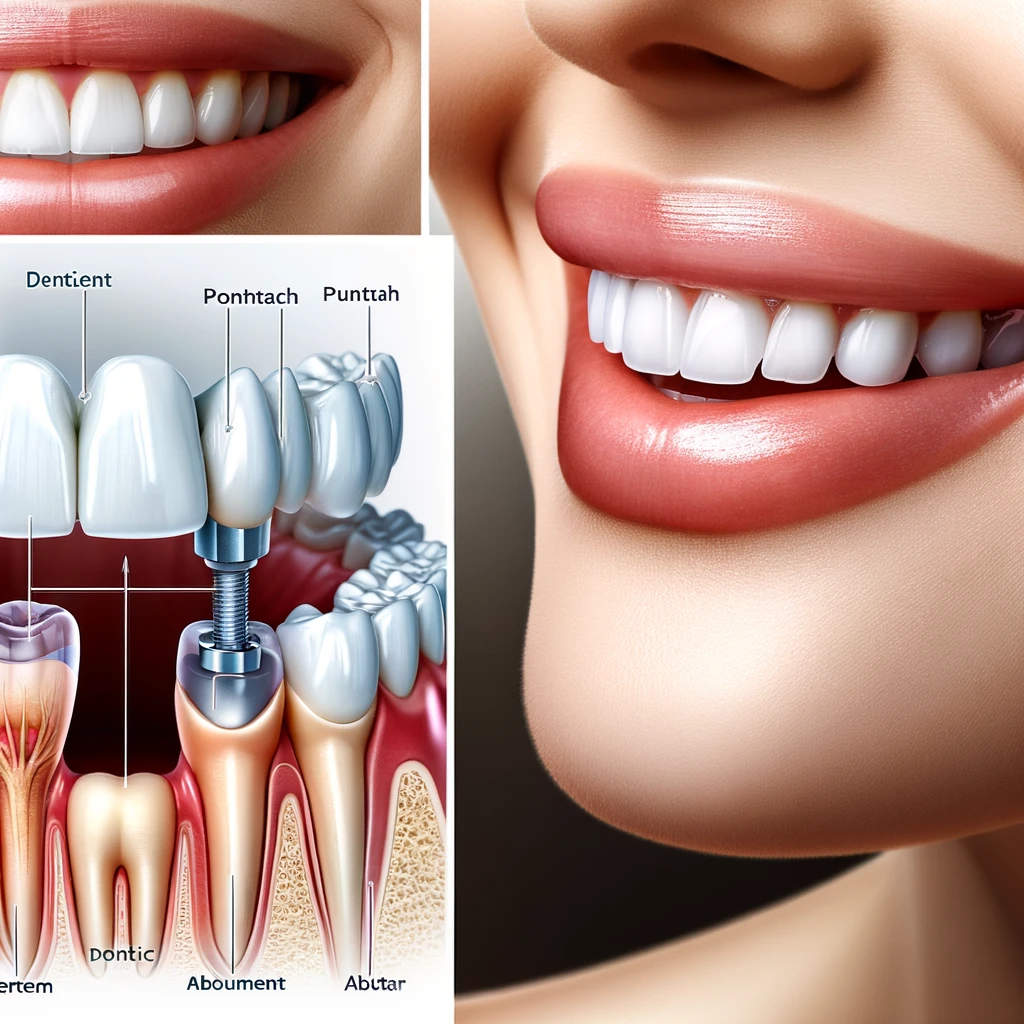Dental bridges are a popular solution for replacing missing teeth, offering both functional and aesthetic benefits. However, to ensure their longevity and maintain oral health, it is essential to understand the proper care and maintenance they require. This article provides valuable tips and recommendations for maintaining oral health with dental bridges, including daily care routines, dietary considerations, and the importance of regular dental checkups.
Key Takeaways
- Effective dental bridge care involves understanding the materials used, practicing good oral hygiene, and adopting habits that prevent damage to the bridge.
- Regular professional checkups and cleanings are crucial for the longevity of dental bridges, and following customized aftercare instructions can help manage any initial discomfort.
- Prompt attention to any damage or discomfort associated with dental bridges is key to ensuring their continued functionality and preventing further oral health issues.
Essential Care and Maintenance for Dental Bridges

Understanding Bridge Materials and Their Care
When you opt for a dental bridge, it’s essential to understand the materials used and how to care for them. Dental bridges are typically made from porcelain, ceramic, or metal alloys—each with its own care requirements. Porcelain and ceramic bridges blend in with your natural teeth but may chip more easily than their metal counterparts, which boast durability.
To ensure the longevity of your dental bridge, consider the following tips:
- Brush and floss regularly to prevent plaque buildup around the bridge.
- Avoid hard foods and using your teeth as tools to prevent damage.
- Be mindful of habits like teeth grinding, which can exert extra pressure on the bridge.
The craftsmanship of your dental bridge also plays a pivotal role in its maintenance. A bridge that is expertly crafted and fits precisely will likely last longer and require less repair. For a comprehensive understanding of dental bridge care, refer to a reliable Dental Bridges Guide.
Implementing Effective Oral Hygiene Practices
To ensure the longevity of your dental bridge, it is imperative to adopt a meticulous oral hygiene routine. Brushing your teeth twice a day with fluoride toothpaste is a cornerstone of this practice. When flossing, use a gentle touch to guide the floss under the bridge with the aid of a floss threader, moving it back and forth to remove plaque and food remnants from both the artificial tooth and the anchor teeth.
In addition to regular brushing and flossing, consider the following steps to maintain your dental bridge:
- Utilize specialized floss, such as super floss or interdental brushes, to clean beneath the bridge.
- Choose a soft-bristled toothbrush or one specifically designed for dentures to avoid abrasiveness.
- Incorporate a fluoride rinse into your daily routine for added protection against decay.
While these measures are crucial, they cannot replace the professional oversight required following a Tooth Extraction Process. Regular checkups are essential to monitor the health of your dental bridge and the surrounding teeth, ensuring that any potential issues are addressed promptly.
Adopting Healthy Dental Habits
To ensure the longevity of your dental bridge, it is crucial to adopt habits that prevent undue stress on your restoration. Avoid using your teeth as tools for opening packages or biting nails, as these actions can apply excessive force and potentially damage the bridge. Instead, focus on thoughtful eating habits, such as cutting fruits and vegetables into smaller pieces to minimize strain.
In addition to these practices, consider the following tips:
- Schedule dental appointments every six months for cleanings and inspections of your bridge.
- Use the appropriate tools, like floss or specialized brushes, to clean around and under the bridge as recommended by your dentist.
While these habits are essential, it’s also beneficial to explore modern solutions like Invisalign Tricks, which can complement your dental care routine by addressing alignment issues without putting additional pressure on your dental bridge.
Navigating Damage and Repairs
When your dental bridge suffers damage or failure, it is crucial to take immediate and appropriate action to prevent further complications. Act swiftly to address any issues, as this can significantly affect the functionality of the bridge and the health of adjacent teeth. Here are the steps you should follow:
- Protect the bridge: If the bridge is loose or has fallen out, keep it in a safe place to avoid further damage and loss.
- Avoid stress on the area: Refrain from chewing on the affected side to minimize pressure on the damaged bridge and surrounding teeth.
Contact your dentist without delay to schedule an emergency appointment. Describe the condition of the bridge and any discomfort you are experiencing. During the visit, your dentist will assess the damage and discuss with you the best course of action, which may include repair or replacement of the bridge.
Gentle cleaning is also important. Use a soft-bristled toothbrush to brush around the damaged area and rinse with warm salt water to maintain cleanliness and reduce the risk of infection. Following these steps and your dentist’s guidance can help manage the situation effectively and ensure the longevity of your dental work.
Professional Care and Regular Checkups

Selecting the Right Dental Professional
When it comes to the care of your dental bridge, the selection of a skilled dental professional is paramount. Choose a reputable dentist with a specialization in restorative dentistry, as their expertise is crucial for the long-term success and quality of your dental bridge. Here are some steps to guide you in making an informed decision:
- Verify the dentist’s qualifications and experience in dental bridge work.
- Look for reviews or testimonials from other patients who have received similar treatments.
- Consider the range of services offered by the clinic, ensuring they can address all aspects of dental bridge care, from installation to maintenance and repairs.
By taking these factors into account, you can establish a partnership with a dental professional who will not only enhance the appearance and functionality of your smile but also prioritize your oral health needs.
The Importance of Routine Dental Visits
Ensuring the longevity and functionality of your dental bridge necessitates regular visits to your dentist. Routine checkups are pivotal in the early detection and management of potential issues that may arise with your dental bridge. During these visits, your dentist can assess the condition of the bridge, the health of the abutment teeth, and the integrity of the supporting gums and bone structure.
During your checkup, your dentist will:
- Examine the fit and function of the bridge.
- Check for signs of decay or gum disease around the bridge.
- Clean the bridge and surrounding teeth to prevent plaque buildup.
It is generally recommended to schedule dental checkups every six months, although your dentist may suggest a different frequency based on your individual oral health needs. These regular appointments are a critical component of your oral care routine and are essential in maintaining the health of your dental bridge and your smile.
Following Customized Aftercare Instructions
Upon receiving your dental bridge, your dentist will equip you with tailored aftercare instructions to ensure the longevity and functionality of your new appliance. These guidelines are designed to address the unique aspects of your dental health and the specifics of your bridge. Adherence to these instructions is paramount for maintaining oral health and the integrity of the bridge.
The aftercare advice will typically cover how to effectively clean around the bridge, manage any initial discomfort, and the scheduling of follow-up visits. These visits are crucial for monitoring the bridge’s condition and making any necessary adjustments. It is important to note that the aftercare regimen may evolve over time, as your dentist assesses the ongoing performance of the bridge and your oral health.
To summarize, the key aspects of following customized aftercare instructions include:
- Maintaining diligent oral hygiene around the bridge
- Managing expectations regarding initial sensations post-procedure
- Scheduling and attending regular follow-up appointments
By closely following your dentist’s aftercare instructions, you can contribute significantly to the success and durability of your dental bridge.
Conclusion
In conclusion, the proper care and maintenance of a dental bridge are paramount for ensuring its longevity and preserving overall oral health. Adhering to a regimen of thorough oral hygiene, including regular brushing, flossing, and the use of fluoride rinses, is essential. It is equally important to avoid habits that could damage the bridge, such as chewing hard foods or ice. Regular dental checkups are crucial for monitoring the condition of the bridge and addressing any issues promptly. By following the tips and recommendations outlined in this article, individuals with dental bridges can maintain their restorative work and enjoy the functional and aesthetic benefits it provides for many years to come.

